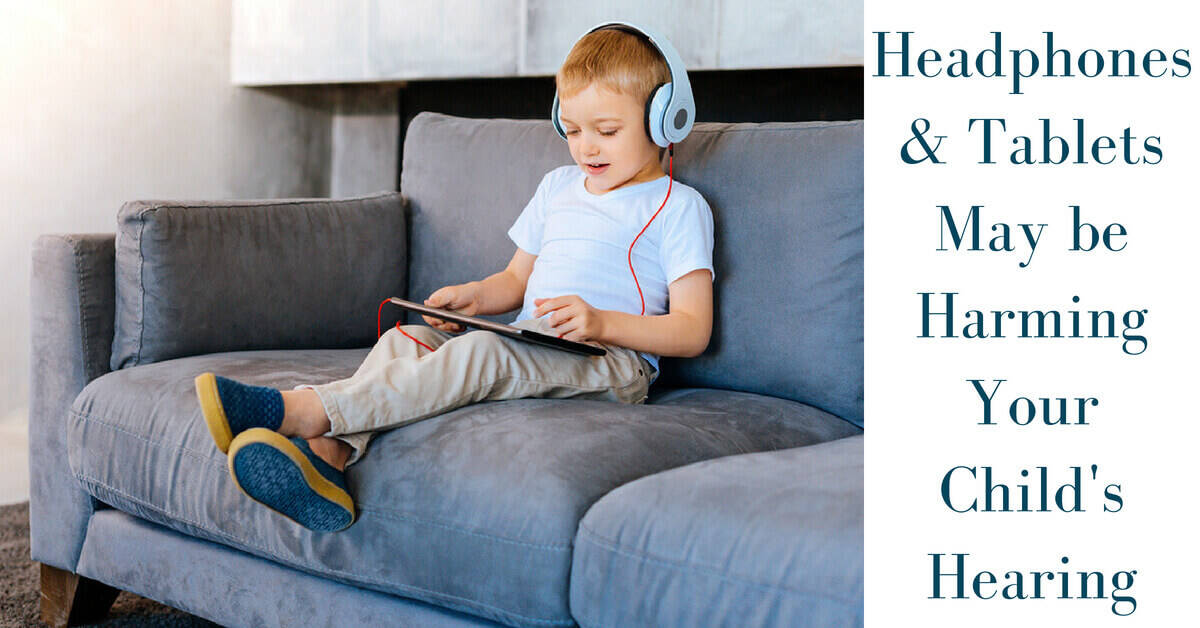
- A Step-by-Step Look at How Hearing Aids Make Sounds Sharper - May 5, 2025
- Causes of Conductive Hearing Loss? - April 27, 2025
- Can Treating Hearing Loss Reduce Stress? - April 15, 2025
Portable music players have been around since the late 20th century, but there’s no denying that they’ve come a long way since we were kids. With more sophisticated technology – in sound quality and battery life – kids these days are plugged in for longer periods of time.
According to the World Health Organization (WHO), over 1 billion “teenagers and young adults are at risk of developing hearing loss due to the unsafe use of personal audio devices and exposure to damaging levels of sound in noisy entertainment venues.” A new study published in the JAMA Otolaryngology – Head & Neck Surgery suggests that “kids as young as nine can be at risk of hearing loss from an unexpected source: their smartphones and tablets.”
Study: Hearing Loss in Children in Relation to Electronic Devices
In a recent report, Dutch researchers reported findings from a long-running population study that tracked the health of 3,000 children from birth. An analysis of these results, between 2012 and 2015, included hearing tests which found that 14% of participants experienced hearing problems.
These results were bolstered by testimonies from parents of 2000 kids reporting on their kids’ usage of portable music players. In this group, “800 were said to listen to music players at least one to two days a week…seven per cent tested positive for high frequency hearing loss, a form of hearing loss often caused by noise exposure, usually only in one ear.”
Upon further examination of this group of 2000 children, “researchers estimated that children who listened to portable music players were nearly three times as likely to have high-frequency hearing loss than those who didn’t.”
Prevalence of Childhood Hearing Loss
According to the WHO, over 43 million people (12 to 35 years old) live with disabling hearing loss. In middle and high- income countries, 50% of people between 12 and 35 years old are exposed to unsafe levels of sound on a daily basis. This may lead to permanent hearing loss. Hearing loss is defined as having hearing loss greater than 30 decibels in children.
Acquired hearing loss occurs after birth, at any time in a child’s life. Hearing loss may occur due to many factors, such as ear infections, chicken pox, head injury, measles, meningitis, and influenza. It also occurs due to exposure to loud noise.
Preventing Childhood Hearing Loss
There many ways to prevent noise-induced hearing loss in children and teenagers. Here are a few tips from the WHO:
Keep the Volume Down
Using noise-canceling headphones is the healthiest option for your hearing. Earbuds are convenient, but they do not cancel out external noise. When young people listen with earbuds, they tend to crank up the volume to drown out the external noise. This creates a hazardous volume of sound near the eardrum, which may cause permanent damage to hearing.
Limit Time in Noise
Most hearing specialists agree that when listening to personal audio devices, following the 60-60 rule helps to prevent hearing loss. That is, listening for 60 minutes at no more than 60% of the volume. When in a noisy venue for a live performance or a sporting event, use earbuds. Also, take a break from the noise by stepping outside or moving away from loud sounds.
Monitor Safe Listening Levels
You can find many apps available to control safe listening levels. If you are a parent, you may want to download these apps to monitor safe listening to levels on your child’s electronic devices. It will prevent them from turning the volume up without a password.
Get Regular Hearing Check-Ups
As with people who wear contact lenses and require annual eye exams, schedule in an annual hearing exam for the entire family. Most schools provide annual hearing tests for their students as well. Make sure to review these results and keep a watch on your children’s hearing health!
Educate Young People about Safe Listening
Hearing loss, once it occurs, is permanent and irreversible. Most young people do not consider their hearing health as they are enjoying their music and media. Sit down with your child or teen and discuss the long-term effects of regular exposure to loud noise. Share with them the options of ear protection and tips to minimize their exposure to loud noise on a daily basis.
To learn more about healthy hearing practices, contact us at Hearing Aid Specialists of the Central Coast.
